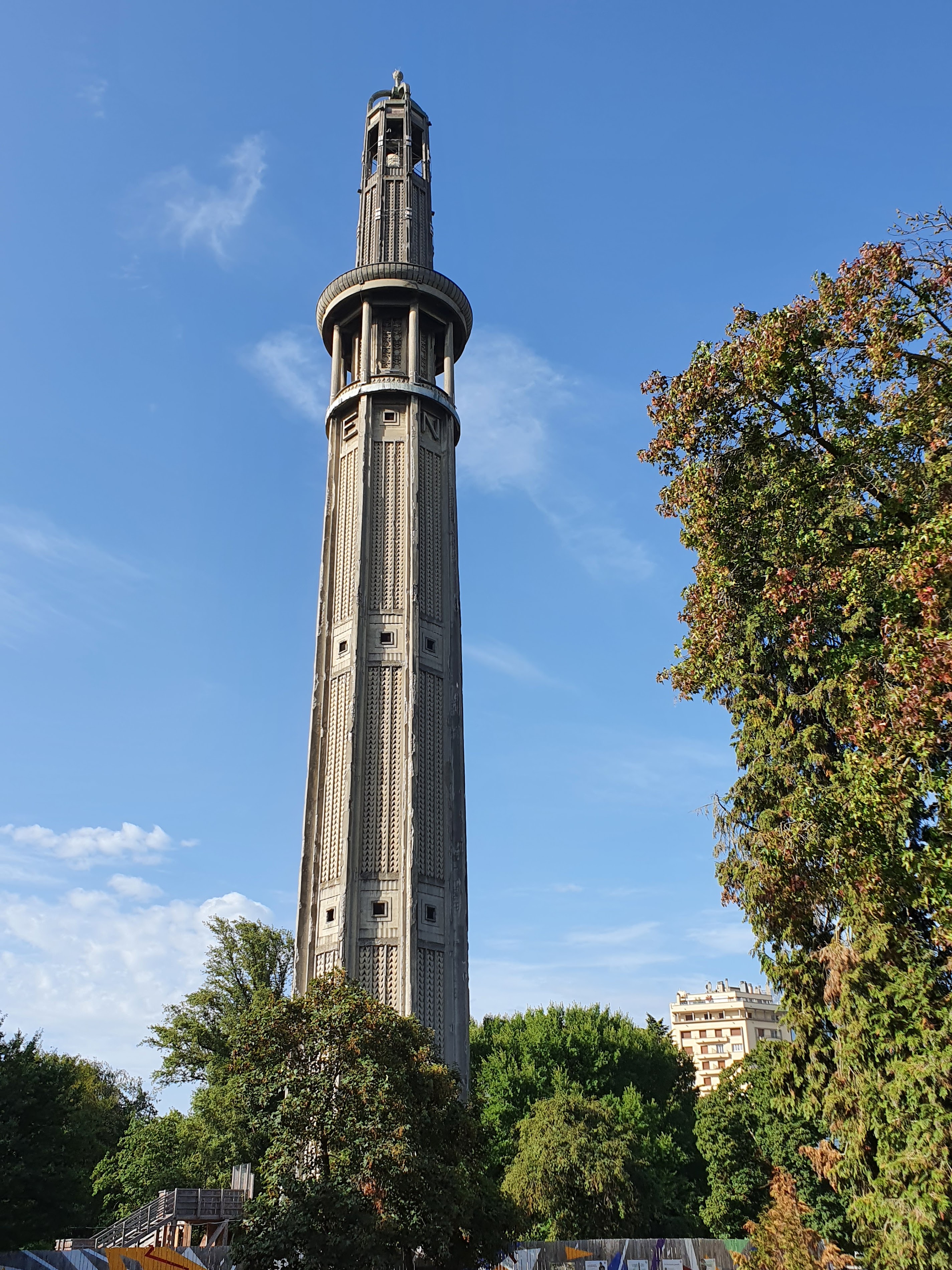Tour Perret: Grenoble's Concrete Sentinel
In the heart of the French Alps, a city of innovation and history unfolds. Grenoble, known for its blend of urban charm and mountain majesty, holds many treasures. Among these, a concrete giant stands tall, its presence both celebrated and debated. This is the story of Tour Perret, a landmark that has watched over Grenoble for nearly a century.

A Pioneer in the Sky
When the decision to construct Tour Perret was made in the 1920s, a bold vision was embraced. The tower was conceived as part of the Grenoble International Exhibition of Hydropower and Tourism in 1925. Auguste Perret, a renowned architect and pioneer of reinforced concrete, was entrusted with the task. His creation would become Europe's first skyscraper made entirely of this revolutionary material.
Standing at an impressive height of 95 meters (312 feet), Tour Perret was designed to be seen. Its sleek, Art Deco-inspired form was a stark contrast to the traditional architecture of Grenoble. The tower was not just a feat of engineering but a symbol of progress and modernity.
Things to do in Amiens
A Multifaceted Monument
Tour Perret's purpose has evolved over the decades. Initially, it served as an observation tower, offering panoramic views of Grenoble and the surrounding Alps. Visitors were whisked to the top by elevators, a novelty at the time. The tower also housed a restaurant, where diners could enjoy meals with a breathtaking backdrop.
During World War II, the tower took on a different role. It was used as a lookout post, its height providing a strategic vantage point. In the years that followed, various ideas for its use were proposed, from a weather station to a television transmitter.
Challenges and Conservation
As the decades passed, Tour Perret faced challenges. The innovative use of reinforced concrete, while groundbreaking, led to structural issues over time. By the late 20th century, concerns about the tower's stability were raised. Public access was restricted in 1960, and the tower stood silent, its future uncertain.
However, the people of Grenoble were not ready to bid farewell to their concrete sentinel. Efforts to preserve Tour Perret gained momentum. In 1998, it was designated a historical monument, recognizing its architectural and cultural significance. This status paved the way for restoration projects aimed at securing the tower's future.
A New Chapter
Today, Tour Perret stands as a testament to Grenoble's spirit of innovation and preservation. While not currently open to the public, plans for its restoration and reopening are underway. The tower continues to be a subject of fascination for architects, historians, and locals alike.
From certain vantage points in the city, Tour Perret can be seen standing proudly against the backdrop of the Alps. It serves as a reminder of Grenoble's forward-thinking past and its commitment to preserving its unique heritage.
As efforts to revitalize Tour Perret continue, the tower remains an integral part of Grenoble's skyline and identity. It stands as a bridge between the city's innovative past and its dynamic future, a concrete dream that continues to inspire.
While Tour Perret may not currently be accessible, Grenoble offers numerous other attractions that showcase its rich history and culture. For those interested in exploring more of the city's architectural heritage, a visit to the Musée de l'Ancien Évêché is highly recommended. This museum, housed in a former bishop's palace, offers a fascinating journey through Grenoble's past, complementing the story told by Tour Perret's silent vigil over the city.

 Home
Home Wishlist
Wishlist